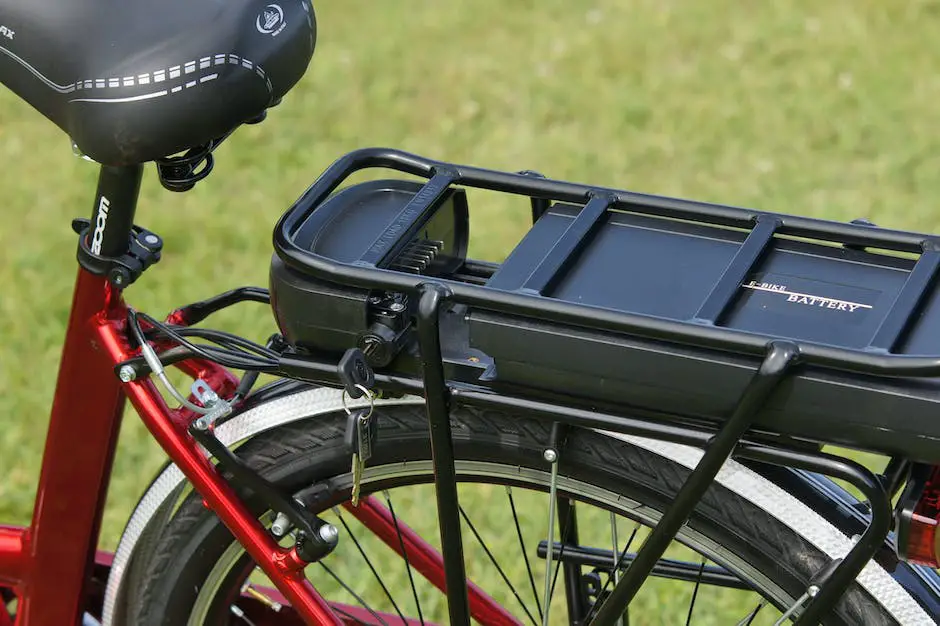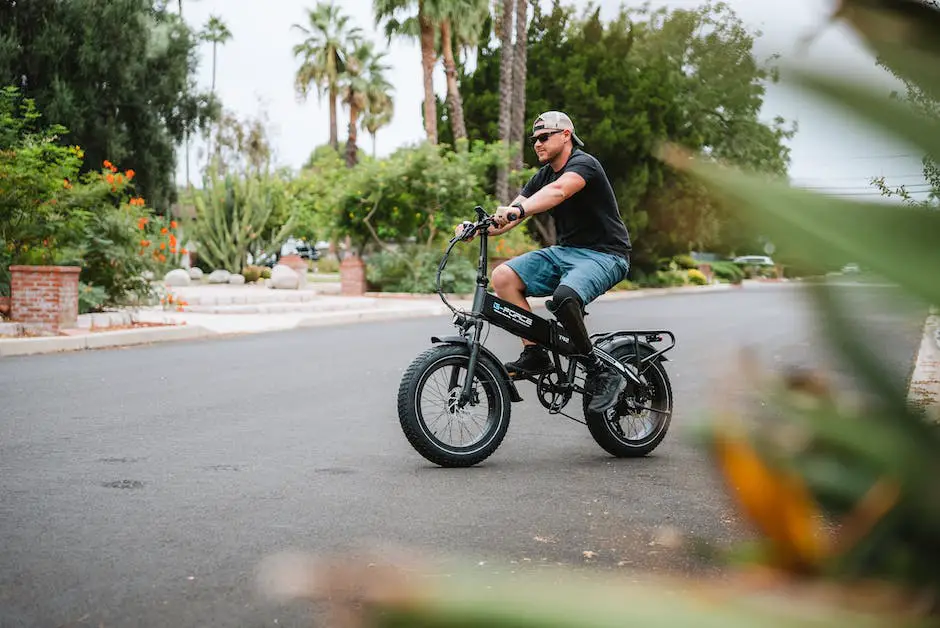Mastering E-Bikes for Perfect Motorhome Tours
Embarking on motorhome tours with an e-bike offers a unique blend of freedom, flexibility, and environmentally friendly travel. As the world increasingly embraces sustainable modes of transport, understanding and utilising e-bikes becomes essential for modern adventurers. This essay aims to provide you with a foundational grasp of e-bikes, from understanding their mechanics – including vital components such as the motor, battery, charging, maintenance, and necessary safety measures – to using functionalities like throttles, pedal assist modes and gauges. Furthermore, practical knowledge on ideal storage solutions for e-bikes in motorhomes will be explored, followed by valuable insights into route planning with consideration of e-bike’s battery range and using GPS navigation tools. Lastly, the paramount aspect of e-bike insurance and familiarising oneself with the legal implications surrounding their use will be highlighted.
Understanding E-Bikes
Understanding E-Bikes
E-bikes, or electric bicycles, have gained immense popularity recently for their convenience and eco-friendly nature. They are modern marvels with intricate mechanics that make them ideal for various purposes, such as motorhome tours. Let’s dive into the principles behind their operation and learn how to use these formidable machines.
Mechanics of E-Bikes
An e-bike operates on a system that includes a motor, a battery, and a controller. The motor provides the thrust, which is powered by the battery; the controller acts as the brain of the e-bike, controlling the motor’s power based on inputs from the rider. All three components work in harmony to provide a smooth ride, making pedalling easier and giving you, the rider, an opportunity to take in your surroundings without exerting too much effort.
Essential Components: The Motor and Battery
The core of an e-bike’s functionality is its motor. The motor can be located on the front or rear wheel or at the centre of the bike, each providing a unique riding experience. Mid-drive motors are often favoured for climbing hills and off-road biking, while hub motors are excellent for flat surfaces.
The battery is another crucial component. Most e-bikes use lithium-ion batteries, akin to those in laptops and smartphones. It’s worth noting that a larger battery will mean a longer potential riding distance, but it will also result in an increase in weight.
Charging and Maintenance of E-Bikes
Charging an e-bike is as simple as plugging it into a regular electrical outlet. It typically takes between two to six hours for a complete charge, depending on the model and battery type.
Maintenance for e-bikes is less arduous than for a regular bicycle. Regular inspections for loose screws and nuts, timely lubrication, and keeping the bike clean are all-important. It’s also recommended to have a professional e-bike service once a year.
Safety Measures
In addition to these mechanics, it is crucial to consider safety measures. A helmet is non-negotiable, while protective padding and high-visibility clothing are also highly recommended. Also, make sure your e-bike is fitted with front and rear lights for visibility.
Using Throttles, Pedal Assist Modes and Gauges
Understanding e-bike controls will have you riding confidently in no time. Some e-bikes have a throttle control that when engaged, instructs the motor to supply power, providing an instant burst of speed. This is typically found on the handlebars for easy access.
Pedal-assist modes determine how much help you receive from the motor when pedalling. The higher the level, the less pedalling you’ll need to do. This mode is adjustable on the e-bike’s control panel.
Last,y gauges can inform you about your e-bike’s condition: speed, battery level, distance covered, and pedal-assist level. Monitor these consistently to maintain your e-bike’s performance and ensure a safer ride.
Now, my friend, you’re ready to embark on your motorhome tour with your e-bike. Enjoy, respect the rules of the road, and always prioritize safety. Happy riding!

E-Bike Storage Solutions for Motorhomes
Discovering E-Bike Storage Solutions for Motorhomes
Embarking on a motorhome tour with your e-bike can offer an immersive journey through nature’s wonders. But, as many adult explorers can attest, finding an ideal e-bike storage solution for motorhomes can be a tremendous undertaking. There exists a myriad of options, from bike racks to interior storage, each with their distinct merits. This exploration narrates a few of these alternatives, helping you to utilise space effectively and place your e-bike securely.
Voyage into Bike Racks for Motorhomes
Conventional bike racks are first-class in providing shelter and security for your e-bike during travel. Designed to fasten to the back of the motorhome, they offer stability while your vehicle is in motion. The advantage of this storage technique is it offers easy accessibility when you wish to ride your e-bike while keeping it shielded from the elements.
There exist two principal kinds of bike racks: ladder-mounted and hitch-mounted. The ladder-mounted racks cling to the ladder of the motorhome, while the hitch-mounted utilise the towing hitch. It’s essential to take into account the weight of the e-bike when choosing this type of rack – e-bikes tend to be heavier than traditional bikes, therefore a rack that can support its weight is crucial.
Embarking on Bike Carriers
E-bikes can be hefty, therefore, bike carriers designed for motorhomes offer an excellent alternative. They are remarkably durable, allowing you to carry multiple e-bikes simultaneously. They connect securely to the back of the motorhome and can withstand the bumpy terrain of adventurous trails.
Many of these bike carriers come equipped with a ramp. This gentler gradient helps when loading and unloading your e-bike, therefore reducing the risk of injuries. A considerable advantage of using a bike carrier for your e-bike is the sturdiness it provides, offering peace of mind as you journey through differing landscapes.
Investigating Interior Storage Solutions
When outside storage isn’t feasible or desired, looking inside the motorhome for e-bike storage solutions is worth investigating. Using straps, you can secure the e-bike in place preventing it from shifting during the journey. Another alternative is to use the living area of the motorhome, just make sure to protect the flooring and other property from potential damage.
Interior storage keeps your e-bike secure and away from potential larceny. It also protects the e-bike from weather conditions, ensuring it stays in prime condition. However, remember, it does reduce the living space within the motorhome, making it vital to ensure there’s still ample room for relaxation during your motorhome tour.
With plenty of feasible bike storage solutions right under your fingertips, the world of motorhome tours with an e-bike awaits. Continuously exploring, revisiting and reshaping these narratives will lead to your perfect e-bike storage solution, paving the way for countless adventurous journeys.

Photo by pgreen1983 on Unsplash
Route Planning and GPS Navigation
Introduction to Motorhome Tours with E-Bikes
Motorhome tours instil a sense of adventure and freedom, providing a unique travel experience where the journey and destination are both part of the excitement. Incorporating e-bikes into these motorhome tours can add another layer of exploration and novelty. Nonetheless, this requires careful planning and foresight, especially considering the limited battery range of e-bikes. Additionally, mastering the use of GPS navigation tools and phone apps can significantly enrich your travel experience. So, let’s delve into how you can successfully use e-bikes for your motorhome tours.
Efficient E-Bike Route Planning
- Assessing the Battery Range: The battery range of your e-bike is a critical factor to take into account while planning your route. A typical e-bike runs 40-60 kilometres on a single charge under ideal conditions. Understanding your e-bike’s battery range will help you determine how far you can go.
- Considering the Terrain: Hills and rough terrains demand more battery power to cross. Adjust your route depending on local geography.
- Locating Charging Points: While creating your route, ensure you’ve noted the places where you might get to charge your e-bike’s battery. Many towns and tourist attractions have charging docks where you can recharge.
- Checking Weather Conditions: Adverse weather conditions like heavy winds, snow or rain can significantly impact your e-bike’s range. Always check the weather forecast before setting out.
Using GPS Navigation Tools and Phone Apps
- Choosing Reliable Navigation Apps: To optimise your travel, choose navigation apps that provide regular updates and detailed information about your route. Apps like Google Maps and Komoot are excellent for planning bike travels, depicting details like terrains and cycling paths.
- Offline Maps: It’s possible you may encounter areas with poor network connectivity. Download offline maps beforehand to help you navigate through such locations.
- Power Banks: To ensure you’re not drained of battery on your devices while navigating, carry power banks for back-up.
- Phone Mounts: Equip your e-bike with a sturdy phone mount. This will keep your hands free and make navigation easier.
Wrapping Up
Using e-bikes for motorhome tours implies adventure, exploration, and the freedom to discover offbeat paths. Proper route planning, an understanding of your e-bike’s battery capabilities, and extensive use of navigation tools and apps will ensure seamless travels. As you develop your skills, you’ll find even greater enjoyment in these self-led motorhome tours. Happy travels!

E-Bike Insurance and Legal Considerations
The Necessity of E-Bike Insurance and Legal Preconditions
As one matures, comprehension of the importance of insurance grows; it serves as a financial blanket shielding us from unanticipated hardships. Equally essential is the knowledge of the legal restrictions attached to the use of e-bikes. As an adult, you need to be aware of some crucial factors tied to e-bike insurance and the legal parameters that govern its usage specifically during motorhome tours.
The Significance of E-Bike Insurance
The freedom associated with cycling can sometimes be hampered by unexpected circumstances such as accidents or theft. Obviously, mishaps like these lead to financial burdens. In this context, having e-bike insurance becomes non-negotiable.
Policies often cover damage to the bike, third-party liability, and personal accident protection. Also included are protection against theft and damage to your e-bike, roadside assistance, and even cover for events abroad should your motorhome tour take you outside of the UK.
Before purchasing an insurance policy, it is crucial to scrutinise the policy carefully. Make sure it caters to your particular needs and covers the usual jeopardy areas appropriately. Policy pricing will differ depending on the bike’s value and the type of cover desired.
Moreover, insurance also delivers peace of mind and a secure fallback option in case of any unforeseen predicaments. It really is akin to carrying a helmet — a basic measure for your protection.
Understanding the Legal Parameters of E-Bike Usage
Once your e-bike is insured adequately, understanding the legal requirements for its usage is next. The use of e-bikes within the UK does not generally demand a licence, insurance or registration, as long as they meet specific criteria.
E-bikes should not have a motor that aids propulsion beyond 15.5 mph (25 km/h). The motor should not exceed 250 watts, and the e-bike, if manufactured after 1st January 2016, must display the power output or manufacturer of the motor and the battery’s voltage.
In addition to these requirements, the rider must be at least 14 years old. However, if your e-bike does not meet these criteria, it may be considered a moped or motorcycle and require licensing and insurance.
Furthermore, ensure that you are familiar with the local laws and restrictions as they can differ slightly, especially if your journey takes you out of the UK. Always sport safety gears and follow the traffic rules religiously to ensure a safe and laid-back tour on your e-bike.
In conclusion, equip yourself with a proper insurance cover for your e-bike and gain a clear understanding of the legal requirements attached to its usage. This will ensure your motorhome tour is more relaxed and enjoyable. Always remember, precautions are not restrictive; instead, they provide a solid foundation for endless worry-free adventures.

Indeed, e-bikes have the potential to dramatically enhance your motorhome touring experience by providing a reliable yet eco-friendly mode of exploring your surroundings. Adopting effective e-bike storage solutions is not only convenient but provides peace of mind during your journeys. Additionally, leveraging the power of advanced navigation tools can assure smooth, optimized travels. However, it’s crucial to underscore the significance of appropriate e-bike insurance and adhering to the stipulated legal considerations, ensuring an entirely carefree travel adventure. With this comprehensive knowledge, you are better equipped to incorporate the use of e-bikes into your motorhome tours, paving the way for unforgettable memories and a smaller carbon footprint.
